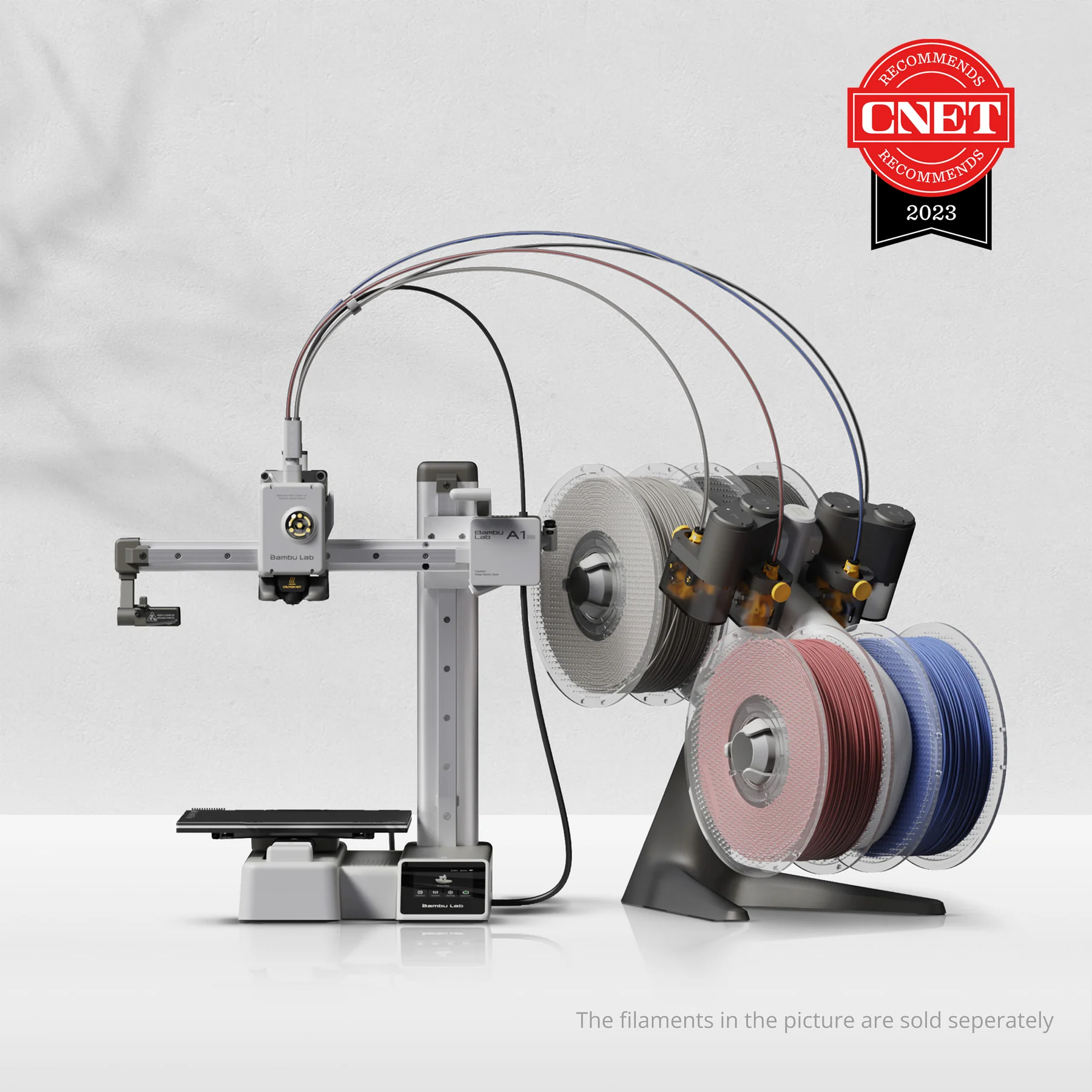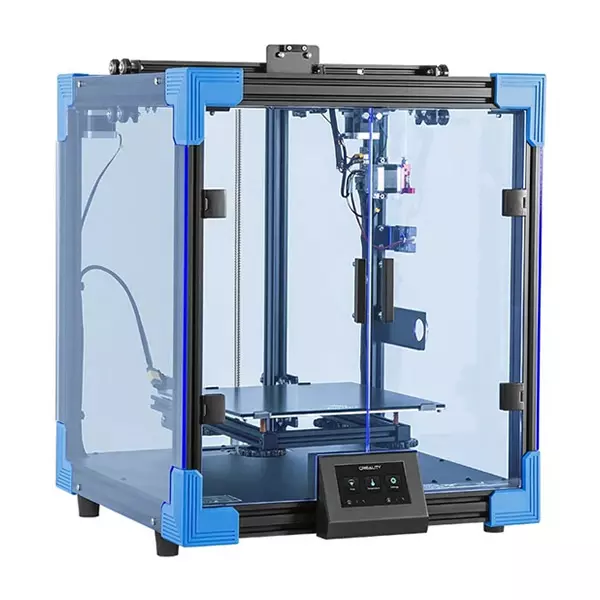Compare A1 Mini vs Ender 6
Comparison between the best 3D printers
Choose the best 3D printer at the best price. The cheapest 3D printers are here.
Buy a 3D printer here with 3D Fila.
 |
 |
|
| Model | A1 Mini |
Ender 6[BUY Ender 6] |
| Printing Material | Filament | Filament |
| Buy Filament for Bambu Lab A1 Mini | Buy Filament forCreality 3D Ender 6 | |
| Estimated price | $549,00 | $499,00 |
| Manufacturer | Bambu Lab | Creality 3D |
| Release Year | 2023 | 2020 |
| Print Volume [mm] | 180x180x180 | 250x250x400 |
| Printer Size [mm] | 315x347x365 | 495x495x650 |
| Weight [kg] | 5,5 | 22 |
| Power Loss Recovery | YES | YES |
| Enclosed printer | NO | YES |
| Bed Leveling | Automatic | Manual |
| Filament End Sensor | YES | YES |
| Bed type | Heated | Heated |
| Power supply system | Direct Drive | Bowden |
| Standard nozzle | 0,4 | 0,4 |
| Maximum Nozzle Temperature [°C] | 300 | 260 |
| Maximum Bed Temperature [°C] | 80 | 100 |
| Maximum printing speed [mm/s] | 500 | 150 |
| Filament holder | YES | YES |
| Camera for supervision | YES | YES |
| Recommended filaments | PLA, PETG, TPU, PVA | PLA, TPU, ABS, PETG |
| Recommended slicers | Bambu Studio, Super Slicer, Cura, Prusa Slicer, Orca | Cura, Simplify, Slic3r |
| Maximum Resolution [mm] | 0,1 | 0,1 |
| Processor | 32-bit Silenciosa | 32 bits |
| Display | Touchscreen 2,4'' | Touchscreen TFT 4,3'' |
| Power Supply | 150 W | 24V / 504W |
| Connectivity | Wifi, Bambu bus, Cartão SD | SD / USB |
| Operating systems | Windows, Linux, Macbook | Windows, Mac, Linux |
| Date of registration in the system | 2024-04-10 | 2021-04-15 |
| Release date | 2023 | 2020 |
| Extra features | The Bambu Lab A1 Mini stands out not only for its impressive speed and automatic calibration, but also for its multi-color printing capability thanks to AMS Lite. This innovative system makes multi-color printing easy, making it accessible to everyone. AMS Lite, specific to the A1 Mini, supports up to four different materials simultaneously, providing creative freedom without complications. With comprehensive sensors for energy monitoring and recovery, a camera for timelapses and Wi-Fi control, the A1 Mini and AMS Lite together offer an intuitive and advanced 3D printing experience, ideal for materials such as PLA, PETG and TPU, and designed for simplicity and fast maintenance with quick-change nozzles. | The Creality Ender 6 stands out in the world of 3D printers with its CoreXY system, offering fast and high-quality prints. With a robust design, it has acrylic panels to protect against air currents, optimizing the printing of materials that require higher temperatures. It features a generic Creality hotend, effective up to ~240°C. Its differentials include 10mm GATES belts, promoting stability at high speeds, and a 360W power supply for reliable performance. The machine also has an intuitive user interface through a 4.3-inch touchscreen. |
| Support for multiple colors and materials (AMS and CFS) | YES | NO |
Notes * |
||
| Cost-benefit | 7 / 10 | 7 / 10 |
| Hardware | 4.8 / 10 | 2.5 / 10 |
| Tela | . | . |
| Print volume | 3 / 10 | 4 / 10 |
| Performance | 4 / 10 | 1 / 10 |
| [BUY Ender 6] |
Conclusion |
| **Conclusion** When comparing the Bambu Lab A1 Mini and the Creality 3D Ender 6, both printers offer compelling advantages depending on individual needs and preferences. The Bambu Lab A1 Mini excels in features relevant to speed, user-friendliness, and modern technology. Its remarkable maximum printing speed, automatic bed leveling, and support for multi-color printing via AMS Lite make it a standout choice for those looking for quick results with less manual intervention. Its lightweight design and compact size further enhance its appeal, especially for users with limited space. Furthermore, the inclusion of advanced sensor technology and Wi-Fi connectivity supports a streamlined and cutting-edge printing experience. On the other hand, the Creality Ender 6, while slightly older, provides a larger print volume and a robust build that caters to those requiring more substantial projects or durability. Its enclosed design is beneficial for printing with materials that necessitate stable temperatures. Despite its slower maximum speed and manual bed leveling, its solid construction and reliability make it a suitable option for users prioritizing enhanced build quality over advanced features. In terms of cost-effectiveness, both models present good value for their respective price points. However, the choice between them will largely depend on the intended use case. The A1 Mini is ideal for users looking for speed and ease of use, particularly for smaller, multi-color projects, while the Ender 6 is more suited for users desiring versatility in materials and larger print capabilities. Depending on what features are prioritized—such as advanced technology versus larger print volumes—either printer could be the best fit. |

